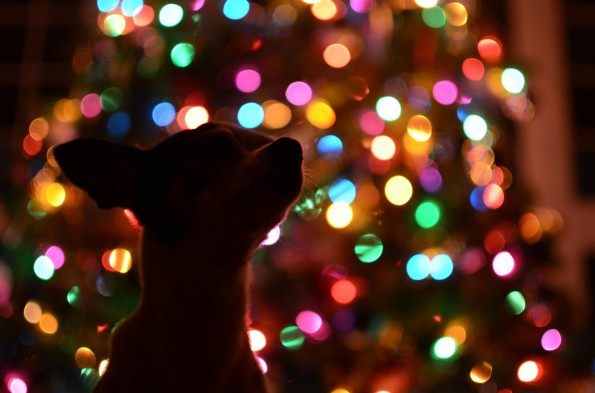
Many people love to decorate their homes during the holidays. However, it’s important to be aware of the potential hazards that these decorations can create for our pets. Any time you introduce something new to your home, there’s a good chance your pet is going to be curious about it, which can lead to some dangerous situations. Luckily, with a bit of pet proofing, you can ensure that your holiday décor doesn’t cause your cat or dog any harm during this holiday season.
The Christmas Tree
Oh! Christmas tree, how lovely are your branches! Well, your pets might agree with that statement. The introduction of the Christmas tree to our homes each year seems to catch our pets’ attentions. Often, they can’t help but interact with it in some way, whether that’s trying to eat the decorations, climb its prickly branches, or just full out knocking it over.
The tree itself can be a source of danger for your pet. The needles and oils of a live tree can be slightly toxic to your pet depending on the variety, causing irritation their delicate mouths and stomachs. Even an artificial tree could be dangerous if consumed. Let your pet sniff the tree when it first makes it appearance, but keep a close eye on them afterward and gently teach them how to behave around. it. Discipline them if necessary to reinforce understanding, and if you do catch your pet eating the tree, get them away and monitor their behavior.
In addition, be wary of the water that the tree sits in. Your pets don’t know this, but the water of your Christmas tree could contain bacteria or preserving additives that could make them sick. To prevent your pets from drinking the Christmas tree water, cover it with a tree skirt.
Finally, it’s important to ensure that your tree is strongly secured. If your cat decides to scale its heights or your rambunctious puppy accidently runs into it, you want to be sure that they won’t send it crashing over. If possible, elevate your tree to make it less accessible and harder to tip.
Decorations
There are several types of decorations that you should consider steering away from altogether, including tinsel, fake snow, edible and breakable decorations. Anything that could be easily ingested, or injure your pets if they get too close and knock them down should be avoided.
Some traditional holiday plants such as real mistletoe, poinsettias, lilies, and holly can also be toxic to pets, so choose fake versions or alternatives, or make sure they are placed out of reach of curious noses.
Electrical cords attached to lights can be tempting for pets to chew on. Keep them from suffering electrical burns or worse by covering cords, taping them down, placing them high out of reach, or using battery operated lights instead.
Candles are another hazard that can be dangerous for both you and your pets. Never leave open flames unattended, as pets may burn themselves or even start a fire by knocking the candles over. A candle flame may warm a room, but make sure it’s always monitored. A better alternative may be the battery-operated faux candles that are now on the market; they give the illusion and atmosphere of a lit flame, but without the risk. another similar hazard are real fires in fireplaces; if you do choose to have one, make sure there is a sturdy and secure screen that blocks your pet from getting too close to the flames.
All this that doesn’t mean your house has to be completely bare. You just need to decorate strategically! For example, place glass ornaments high out of reach so they can’t be pulled down by pets and broken. If your cat is especially likely to climb, consider sticking to ornaments that are less breakable, like the plentiful shatterproof ones now on the market, sturdy plastic ones, or paper. Ensure hanging decorations, like wreaths and garlands, are securely fastened so they can’t be torn down.
You also know your pet best. Pets are trainable by nature (otherwise they wouldn’t be our pets) so all it may take is some gentle coaching to help your pet figure out what is appropriate behavior around holiday decor. This is especially true for younger pets for whom this may all be new. If you let your pet investigate as you decorate and get used to the new objects, they’ll likely lose interest quickly and leave them alone afterward. As pets age and see this process happen year after year, eventually most of them will cease to be intrigued by Christmas trees and decor.
With only a few precautions, you can ensure that the holidays are a festive and safe time for your pets.
*Originally published 12/17/15 and updated to be even more awesome!